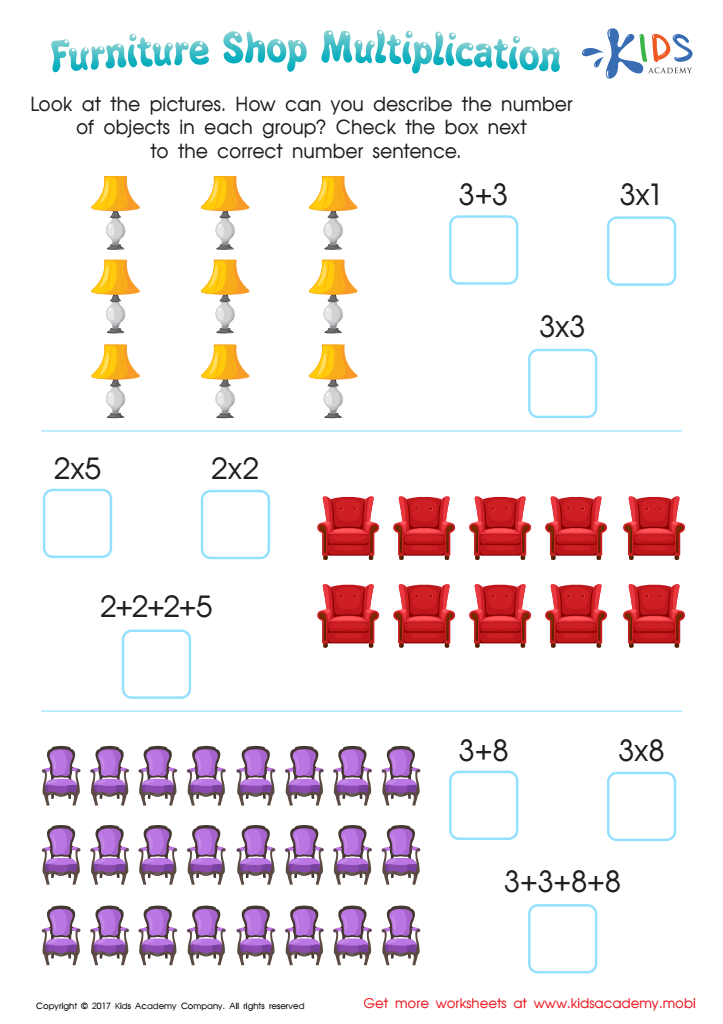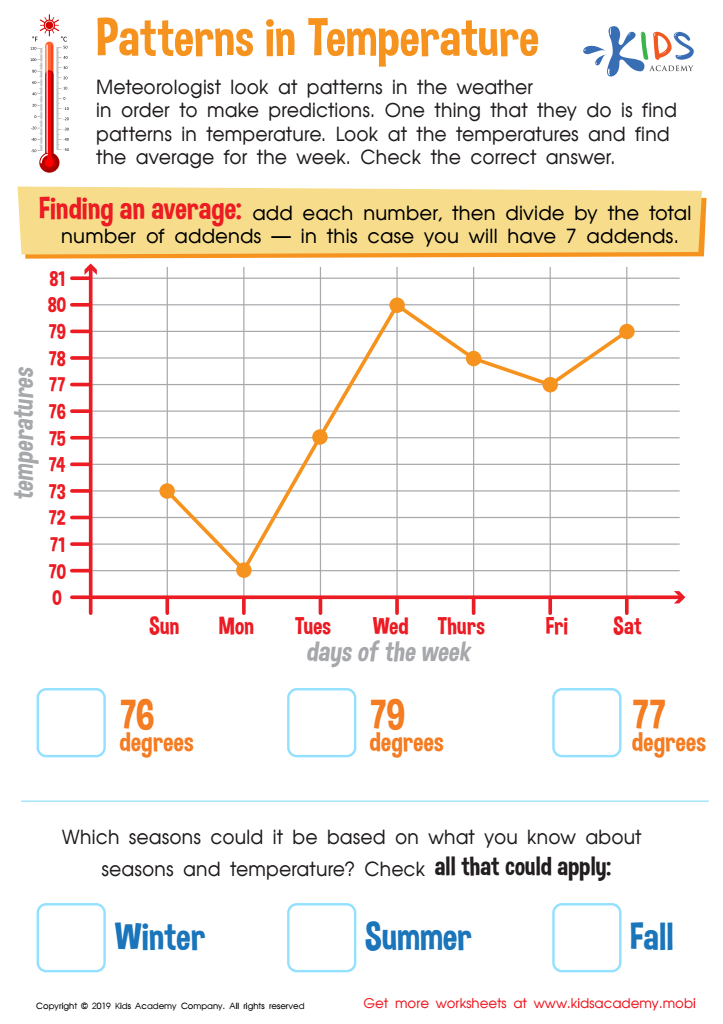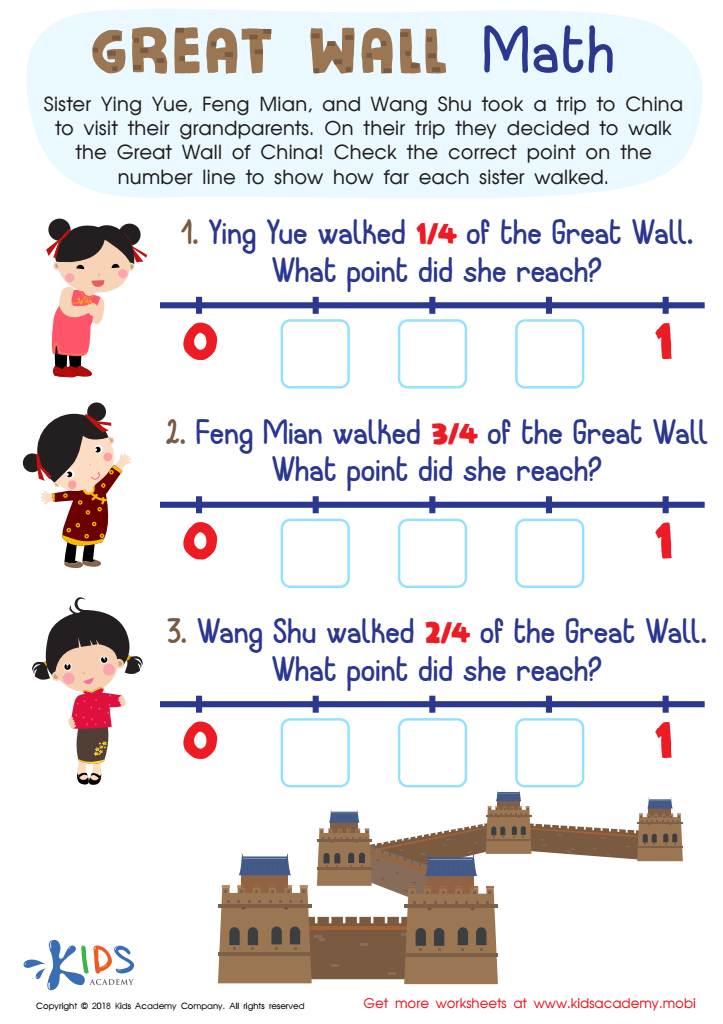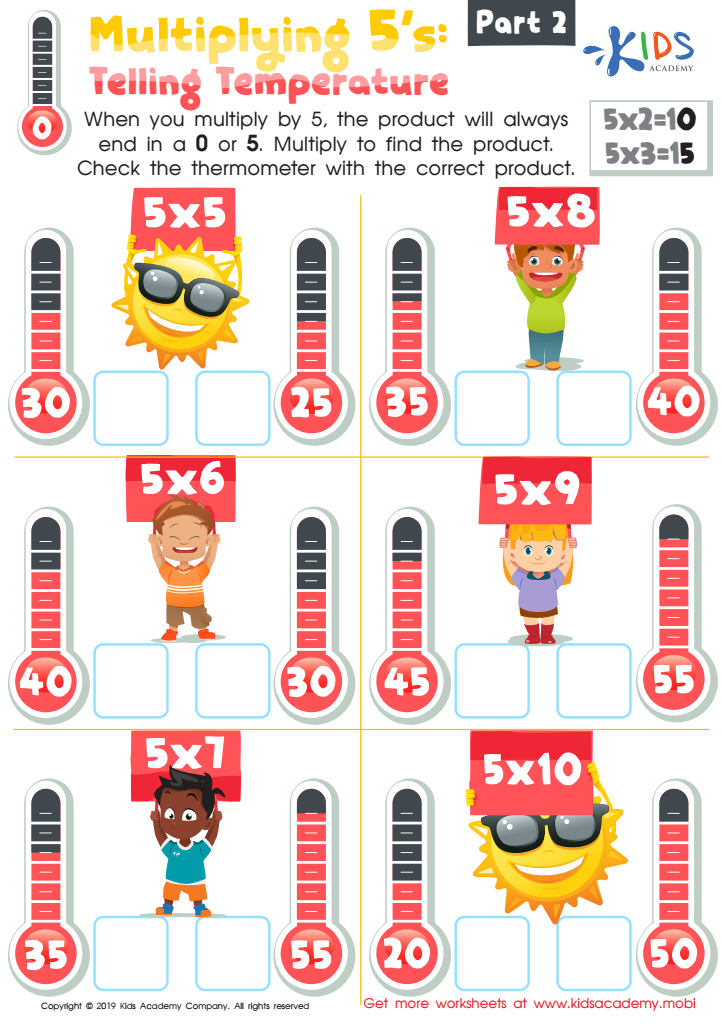Understanding patterns Normal Worksheets for 9-Year-Olds
5 filtered results
-
From - To
Discover our engaging "Understanding Patterns Normal Worksheets for 9-Year-Olds," designed to enhance critical thinking and problem-solving skills. These thoughtfully crafted worksheets help children grasp various patterns, from sequences and shapes to numbers and colors. Ideal for both classroom and at-home learning, our resources cater to different learning styles and keep kids excited about mastering new concepts. Accessible and fun, these worksheets provide repeated practice to build a strong foundation in recognizing and predicting patterns, essential for future math success. Nurture your child's analytical skills while making learning enjoyable with our expertly curated pattern worksheets.


Furniture Shop Worksheet


Patterns in Temperature Worksheet


Great Wall Math Worksheet


Multiplying 5’s: Telling Temperature Part 2 Worksheet


Multiplying 9’s Montgomery Bus Boycott Worksheet
Understanding patterns is fundamental for 9-year-olds, as it builds a crucial foundation for cognitive development and academic achievement. Patterns foster math skills, such as recognizing sequences and predicting future elements, essential for higher-level concepts like algebra. For example, identifying numerical patterns strengthens arithmetic abilities, aiding in multiplication and division.
Patterns also enhance problem-solving and critical thinking. When children discern patterns, they can make sense of complex information, improving reasoning skills. This ability extrapolates to reading, where recognizing patterns in spelling, grammar, and story structures fosters better comprehension and fluency.
Moreover, patterns aid in organizing thoughts and behaviors, promoting self-regulation. Understanding daily routines (a form of pattern) makes transitions smoother, reducing anxiety and improving classroom behavior. Additionally, visual and auditory pattern recognition is instrumental in arts and music, encouraging creativity and expressive skills.
Incorporating patterns into daily learning makes education more engaging and relatable. When parents and teachers emphasize pattern recognition, they equip children with tools for academic success and everyday life. This holistic development influences overall growth, ensuring children become logical thinkers and innovative problem solvers, prepared to tackle future challenges. Prioritizing pattern recognition in early education is, therefore, pivotal.
 Assign to My Students
Assign to My Students
















